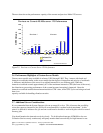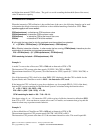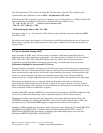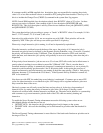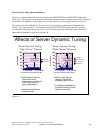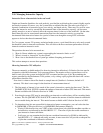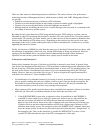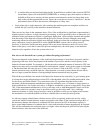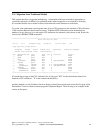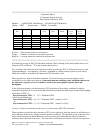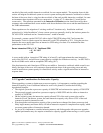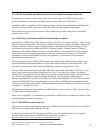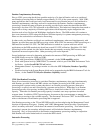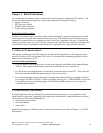
2.11 Migration from Traditional Models
This section describes a suggested methodology to determine which server model is appropriate to
contain the interactive workload of a traditional model when a migration of a workload is occurring.
It is assumed that the server model will have both interactive and client/server workloads.
To get the same performance and response time, from a CPU perspective, the interactive CPU utilization
of the current traditional model must be known. Traditional CPU utilization can be determined in a
number of ways. One way is to sum up the CPU utilization for interactive jobs shown on the Work with
Active Jobs (WRKACTJOB) command.
***************************************************************************
Work with Active Jobs
CPU %: 33.0 Elapsed time: 00:00:00 Active jobs: 152
Type options, press Enter.
2=Change 3=Hold 4=End 5=Work with 6=Release 7=Display message
8=Work with spooled files 13=Disconnect ...
Opt Subsystem/Job User Type CPU % Function Status
__ BATCH QSYS SBS 0 DEQW
__ QCMN QSYS SBS 0 DEQW
__ QCTL QSYS SBS 0 DEQW
__ QSYSSCD QPGMR BCH 0 PGM-QEZSCNEP EVTW
__ QINTER QSYS SBS 0 DEQW
__ DSP05 TESTER INT 0.2 PGM-BUPMENUNE DSPW
__ QPADEV0021 TEST01 INT 0.7 CMD-WRKACTJOB RUN
__ QSERVER QSYS SBS 0 DEQW
__ QPWFSERVSD QUSER BCH 0 SELW
__ QPWFSERVS0 QUSER PJ 0 DEQW
**************************************************************************
(Calculate the average of the CPU utilization for all job types "INT" for the desired time interval for
interactive CPU utilization - "P" in the formula shown below.)
Another method is to run Collection Services during selected time periods and review the first page of the
Performance Tools for iSeries licensed program Component Report. The following is an example of this
section of the report:
IBM i 6.1 Performance Capabilities Reference - January/April/October 2008
© Copyright IBM Corp. 2008 Chapter 2 - Server Performance Behavior 32



